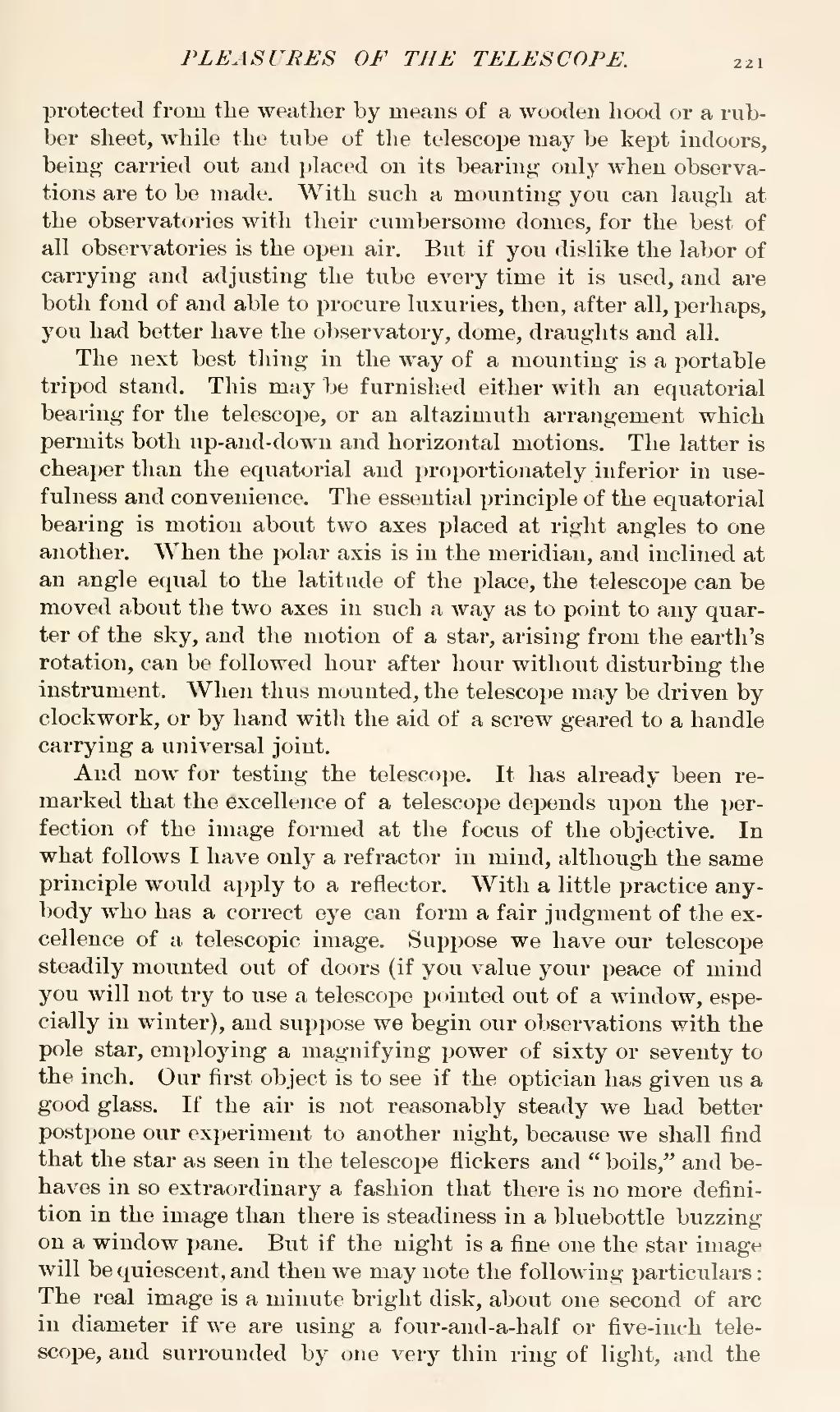protected from the weather by means of a wooden hood or a rubber sheet, while the tube of the telescope may be kept indoors, being carried out and placed on its bearing only when observations are to be made. With such a mounting you can laugh at the observatories with their cumbersome domes, for the best of all observatories is the open air. But if you dislike the labor of carrying and adjusting the tube every time it is used, and are both fond of and able to procure luxuries, then, after all, perhaps, you had better have the observatory, dome, draughts and all.
The next best thing in the way of a mounting is a portable tripod stand. This may be furnished either with an equatorial bearing for the telescope, or an altazimuth arrangement which permits both up-and-down and horizontal motions. The latter is cheaper than the equatorial and proportionately inferior in usefulness and convenience. The essential principle of the equatorial bearing is motion about two axes placed at right angles to one another. When the polar axis is in the meridian, and inclined at an angle equal to the latitude of the place, the telescope can be moved about the two axes in such a way as to point to any quarter of the sky, and the motion of a star, arising from the earth's rotation, can be followed hour after hour without disturbing the instrument. When thus mounted, the telescope may be driven by clockwork, or by hand with the aid of a screw geared to a handle carrying a universal joint.
And now for testing the telescope. It has already been remarked that the excellence of a telescope depends upon the perfection of the image formed at the focus of the objective. In what follows I have only a refractor in mind, although the same principle would apply to a reflector. With a little practice anybody who has a correct eye can form a fair judgment of the excellence of a telescopic image. Suppose we have our telescope steadily mounted out of doors (if you value your peace of mind you will not try to use a telescope pointed out of a window, especially in winter), and suppose we begin our observations with the pole star, employing a magnifying power of sixty or seventy to the inch. Our first object is to see if the optician has given us a good glass. If the air is not reasonably steady we had better postpone our experiment to another night, because we shall find that the star as seen in the telescope flickers and "boils," and behaves in so extraordinary a fashion that there is no more definition in the image than there is steadiness in a bluebottle buzzing on a window pane. But if the night is a fine one the star image will be quiescent, and then we may note the following particulars: The real image is a minute bright disk, about one second of arc in diameter if we are using a four-and-a-half or five-inch telescope, and surrounded by one very thin ring of light, and the
